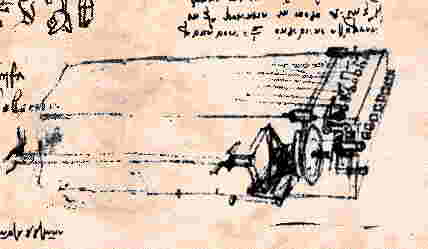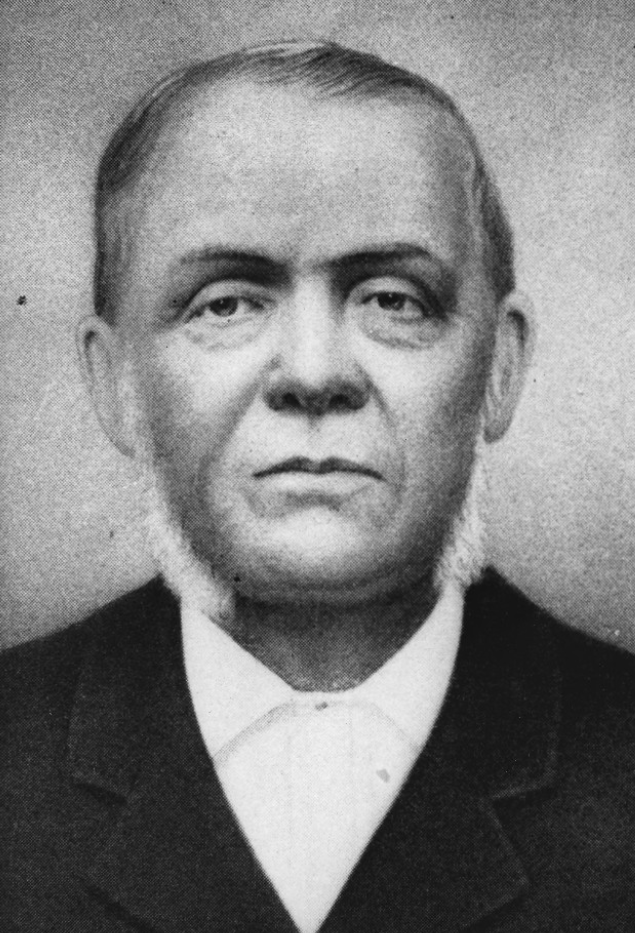|
Wheelharp
The wheelharp is a musical instrument with bowed strings controlled by a keyboard and foot-controlled motor, similar to Leonardo da Vinci's viola organista, a keyboard-operated string instrument for continuously sounding strings by rubbing the strings with spinning wheels, powered by a treadle controlled by one foot of the musician. Created by Jon Jones and Mitchell Manger, the wheelharp debuted at the 2013 NAMM Show in Anaheim, California. According to the Wall Street Journal, it "looks and works like a cross between a harpsichord and a hurdy-gurdy: a motor driven wheel spins, rubbing against strings when the player depresses a key." However, the principle of bowed strings in a keyboard instrument is old. Michael Praetorius' Syntagma Musicum depicted a ''Nürnbergisch Geigenwerk (Geigenklavizimbel)''. See also * Viola organista * Bowed clavier The bowed clavier (', ' or ' in German) is a keyboard instrument strung with gut strings, the tone of which is produced by a steadily rev ... [...More Info...] [...Related Items...] OR: [Wikipedia] [Google] [Baidu] |
Bowed Clavier
The bowed clavier (', ' or ' in German) is a keyboard instrument strung with gut strings, the tone of which is produced by a steadily revolving, well rosined cylinder powered by a foot pedal, a mechanism similar to that found in the hurdy-gurdy. The ' was illustrated and described by Michael Praetorius in his treatise on musical instruments ''Syntagma Musicum'' II, in the section ''De Organograhia'', published 1614-20 in Germany. It was re-invented by Joh. Hohlfeld of Berlin in 1751. This instrument and another one of his inventions, a device that recorded keyboard improvisations in real time, were mentioned in the " Essay on the True Art of Playing Keyboard Instruments" by C. P. E. Bach Carl Philipp Emanuel Bach (8 March 1714 – 14 December 1788), also formerly spelled Karl Philipp Emmanuel Bach, and commonly abbreviated C. P. E. Bach, was a German Classical period musician and composer, the fifth child and sec .... Another version was the klawiolin, designe ... [...More Info...] [...Related Items...] OR: [Wikipedia] [Google] [Baidu] |
Viola Organista
The viola organista is a musical instrument designed by Leonardo da Vinci. It uses a friction belt to vibrate individual strings (similar to how a violin produces sounds), with the strings selected by pressing keys on a keyboard (similar to an organ). Leonardo's design has intrigued instrument makers for more than 400 years, but though similar instruments have been built, no extant instrument constructed directly from Leonardo's incomplete designs is known. Sometimes it is mistakenly referred to as the harpsichord viola, which is a different instrument. Description Leonardo designed many different and elaborate models of viola organista, as preserved in his notebooks of 1488–1489 and in the drawings in the Codex Atlanticus and Manuscript H. Winternitz, Emanuel (1982). Leonardo Da Vinci As a Musician. The first known instrument actually constructed using Leonardo's concept, is Hans Heyden's Geigenwerk of 1575. While the concept is the same, the design is very different; moder ... [...More Info...] [...Related Items...] OR: [Wikipedia] [Google] [Baidu] |
NAMM Show
The NAMM Show is an annual event in the United States that is organized by the National Association of Music Merchants (NAMM), who describe it as "the industry’s largest stage, uniting the global music, sound and entertainment technology communities". Overview The NAMM Show takes place annually in Anaheim, California, at the Anaheim Convention Center, and is one of the largest music product trade shows in the world. Its European counterpart is the '' Musikmesse'' in Frankfurt. The event attracts numerous famous musicians, many of whom are endorsed by exhibitors and come to promote their own signature models and equipment. NAMM is a trade-only business show catering to domestic and international dealers and distributors. The product exhibits are an integral part of the show, allowing the dealers and distributors to see what's new, negotiate deals and plan their purchasing for the next 6 to 12 months. Exhibitors are allotted a specific number of attendees based on the size of t ... [...More Info...] [...Related Items...] OR: [Wikipedia] [Google] [Baidu] |
Anaheim, California
Anaheim ( ) is a city in northern Orange County, California, part of the Los Angeles metropolitan area. As of the 2020 United States Census, the city had a population of 346,824, making it the most populous city in Orange County, the 10th-most populous city in California, and the 56th-most populous city in the United States. Anaheim is the second-largest city in Orange County in terms of land area, and is known for being the home of the Disneyland Resort, the Anaheim Convention Center, and two major sports teams: the Los Angeles Angels baseball team and the Anaheim Ducks ice hockey club. Anaheim was founded by fifty German families in 1857 and incorporated as the second city in Los Angeles County on March 18, 1876; Orange County was split off from Los Angeles County in 1889. Anaheim remained largely an agricultural community until Disneyland opened in 1955. This led to the construction of several hotels and motels around the area, and residential districts in Anaheim soon f ... [...More Info...] [...Related Items...] OR: [Wikipedia] [Google] [Baidu] |
Wall Street Journal
''The Wall Street Journal'' is an American business-focused, international daily newspaper based in New York City, with international editions also available in Chinese and Japanese. The ''Journal'', along with its Asian editions, is published six days a week by Dow Jones & Company, a division of News Corp. The newspaper is published in the broadsheet format and online. The ''Journal'' has been printed continuously since its inception on July 8, 1889, by Charles Dow, Edward Jones, and Charles Bergstresser. The ''Journal'' is regarded as a newspaper of record, particularly in terms of business and financial news. The newspaper has won 38 Pulitzer Prizes, the most recent in 2019. ''The Wall Street Journal'' is one of the largest newspapers in the United States by circulation, with a circulation of about 2.834million copies (including nearly 1,829,000 digital sales) compared with ''USA Today''s 1.7million. The ''Journal'' publishes the luxury news and lifestyle magazin ... [...More Info...] [...Related Items...] OR: [Wikipedia] [Google] [Baidu] |
Harpsichord
A harpsichord ( it, clavicembalo; french: clavecin; german: Cembalo; es, clavecín; pt, cravo; nl, klavecimbel; pl, klawesyn) is a musical instrument played by means of a keyboard. This activates a row of levers that turn a trigger mechanism that plucks one or more strings with a small plectrum made from quill or plastic. The strings are under tension on a soundboard, which is mounted in a wooden case; the soundboard amplifies the vibrations from the strings so that the listeners can hear it. Like a pipe organ, a harpsichord may have more than one keyboard manual, and even a pedal board. Harpsichords may also have stop buttons which add or remove additional octaves. Some harpsichords may have a buff stop, which brings a strip of buff leather or other material in contact with the strings, muting their sound to simulate the sound of a plucked lute. The term denotes the whole family of similar plucked-keyboard instruments, including the smaller virginals, muselar, and spinet. ... [...More Info...] [...Related Items...] OR: [Wikipedia] [Google] [Baidu] |
Hurdy-gurdy
The hurdy-gurdy is a string instrument that produces sound by a hand-crank-turned, rosined wheel rubbing against the strings. The wheel functions much like a violin bow, and single notes played on the instrument sound similar to those of a violin. Melodies are played on a keyboard that presses ''tangents''—small wedges, typically made of wood—against one or more of the strings to change their pitch. Like most other acoustic stringed instruments, it has a sound board and hollow cavity to make the vibration of the strings audible. Most hurdy-gurdies have multiple drone strings, which give a constant pitch accompaniment to the melody, resulting in a sound similar to that of bagpipes. For this reason, the hurdy-gurdy is often used interchangeably or along with bagpipes. It is mostly used in Occitan, Aragonese, Cajun French, Asturian, Cantabrian, Galician, Hungarian, and Slavic folk music. One or more of the drone strings usually passes over a loose bridge that can be ma ... [...More Info...] [...Related Items...] OR: [Wikipedia] [Google] [Baidu] |
Michael Praetorius
Michael Praetorius (probably 28 September 1571 – 15 February 1621) was a German composer, organist, and music theorist. He was one of the most versatile composers of his age, being particularly significant in the development of musical forms based on Protestant hymns. Life Praetorius was born Michael Schultze, the youngest son of a Lutheran pastor, in Creuzburg, in present-day Thuringia. After attending school in Torgau and Zerbst, he studied divinity and philosophy at the University of Frankfurt (Oder). He was fluent in a number of languages. After receiving his musical education, from 1587 he served as organist at the Marienkirche in Frankfurt. From 1592/3 he served at the court in Wolfenbüttel, under the employ of Henry Julius, Duke of Brunswick-Lüneburg. He served in the duke's State Orchestra, first as organist and later (from 1604) as '' Kapellmeister'' (court music director). [...More Info...] [...Related Items...] OR: [Wikipedia] [Google] [Baidu] |
Syntagma Musicum
''Syntagma Musicum (1614-1620)'' is a musical treatise in three volumes by the German composer, organist, and music theorist Michael Praetorius. It was published in Wittenberg and Wolfenbüttel. It is one of the most commonly used research sources for seventeenth-century music theory and performance practice The second volume, ''De Organographia,'' illustrates and describes musical instruments and their use; this volume in particular became a valuable guide for research and reconstruction of early instruments in the twentieth century, and thus an integral part of the early music revival. Though never published, Praetorius intended a fourth volume on musical composition. The three extant volumes are: * I: ''Musicae Artis Analecta'' * II: ''De Organographia'' * III: ''Termini musicali'' Contents Volume One: Musicae Artis Analecta The first volume was written in Latin and divided into two parts, published separately. The first part, "on sacred or ecclesiastical music," shows Pr ... [...More Info...] [...Related Items...] OR: [Wikipedia] [Google] [Baidu] |
Viola Organista
The viola organista is a musical instrument designed by Leonardo da Vinci. It uses a friction belt to vibrate individual strings (similar to how a violin produces sounds), with the strings selected by pressing keys on a keyboard (similar to an organ). Leonardo's design has intrigued instrument makers for more than 400 years, but though similar instruments have been built, no extant instrument constructed directly from Leonardo's incomplete designs is known. Sometimes it is mistakenly referred to as the harpsichord viola, which is a different instrument. Description Leonardo designed many different and elaborate models of viola organista, as preserved in his notebooks of 1488–1489 and in the drawings in the Codex Atlanticus and Manuscript H. Winternitz, Emanuel (1982). Leonardo Da Vinci As a Musician. The first known instrument actually constructed using Leonardo's concept, is Hans Heyden's Geigenwerk of 1575. While the concept is the same, the design is very different; moder ... [...More Info...] [...Related Items...] OR: [Wikipedia] [Google] [Baidu] |
Experimental Musical Instruments
''Experimental Musical Instruments'' was a periodical edited and published by Bart Hopkin, an instrument builder and writer about 20th century experimental music design and custom made instrument construction. Though no longer in print, back issues are still available. The material and approach of EMI can now be found electronically on their site hosted by Bart Hopkin. This site is, together with www.oddmusic.com the main source on the internet for experimental musical instrumentalism.https://www.google.com/search?hl=en&client=safari&rls=nl-nl&q=experimental+musical+instrument&btnG=Zoeken&lr= Although only old editions of the magazine are still available and no newer editions appear, the name is still in use as the publisher for many of the book written by Bart Hopkin and co-writers. Publications *''Experimental Musical Instruments'', magazine, 70 issues appeared as a printed publication between 1985 and 1999, later on re-issued as well on CD-ROM. It was first headquartered in Ni ... [...More Info...] [...Related Items...] OR: [Wikipedia] [Google] [Baidu] |





